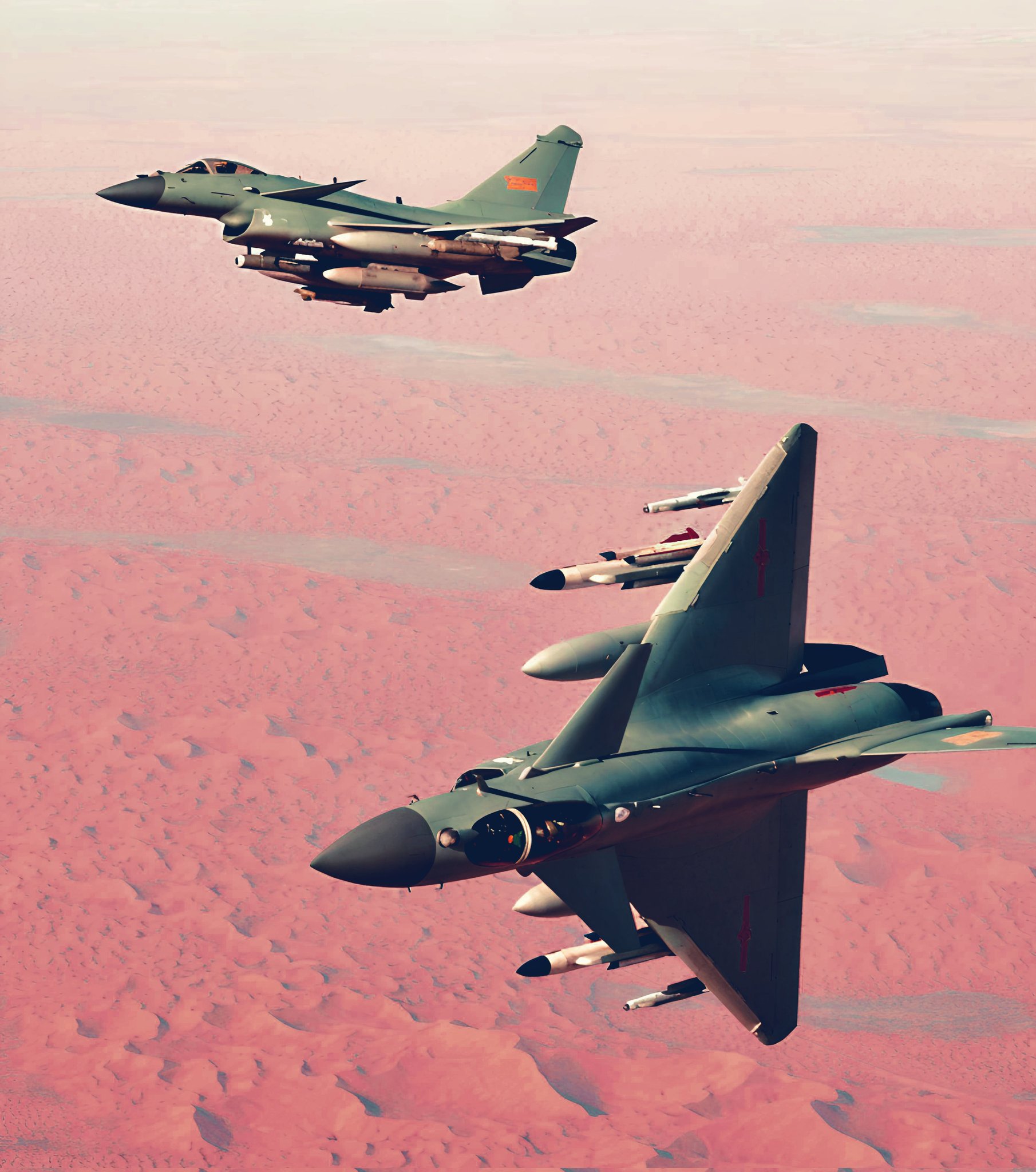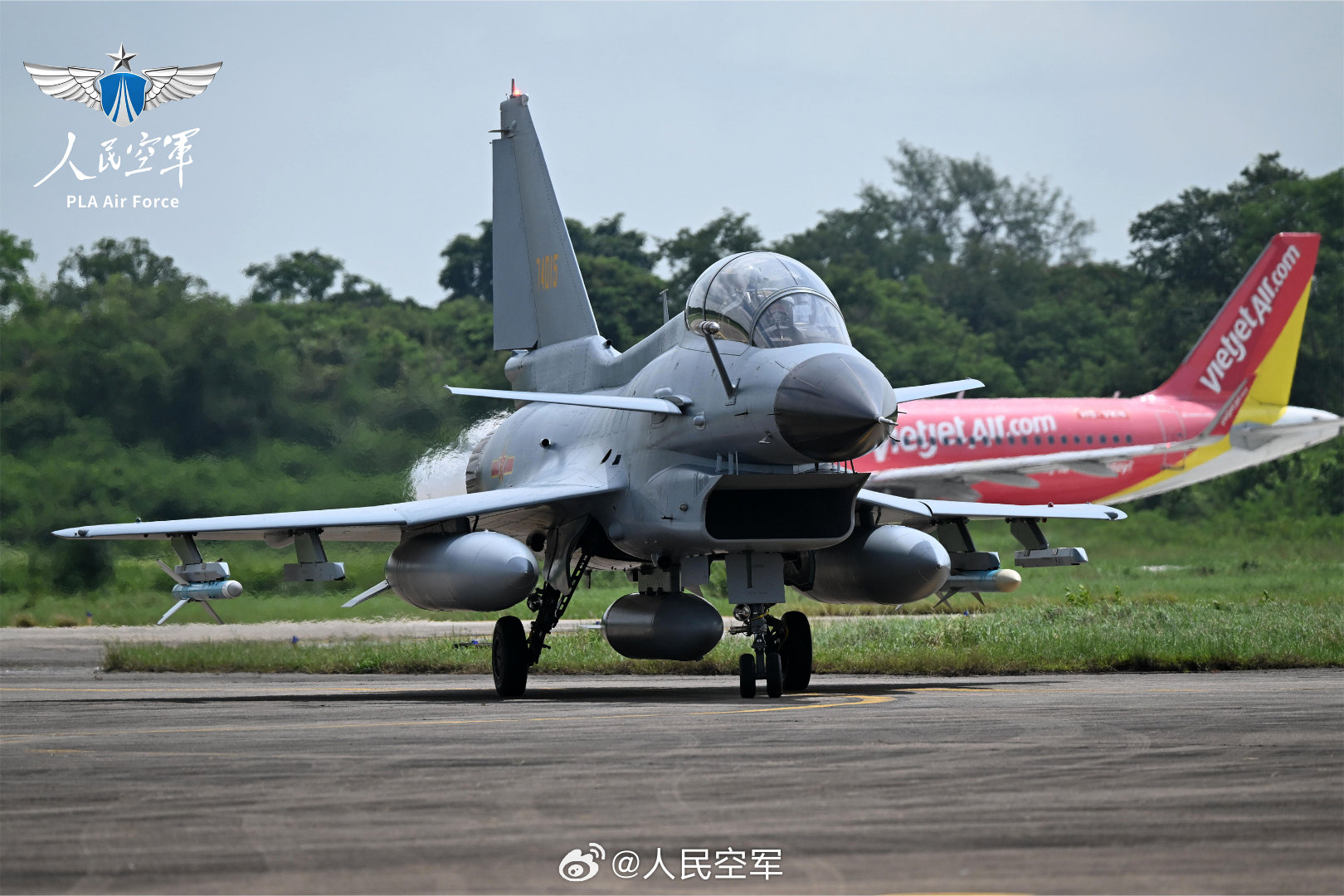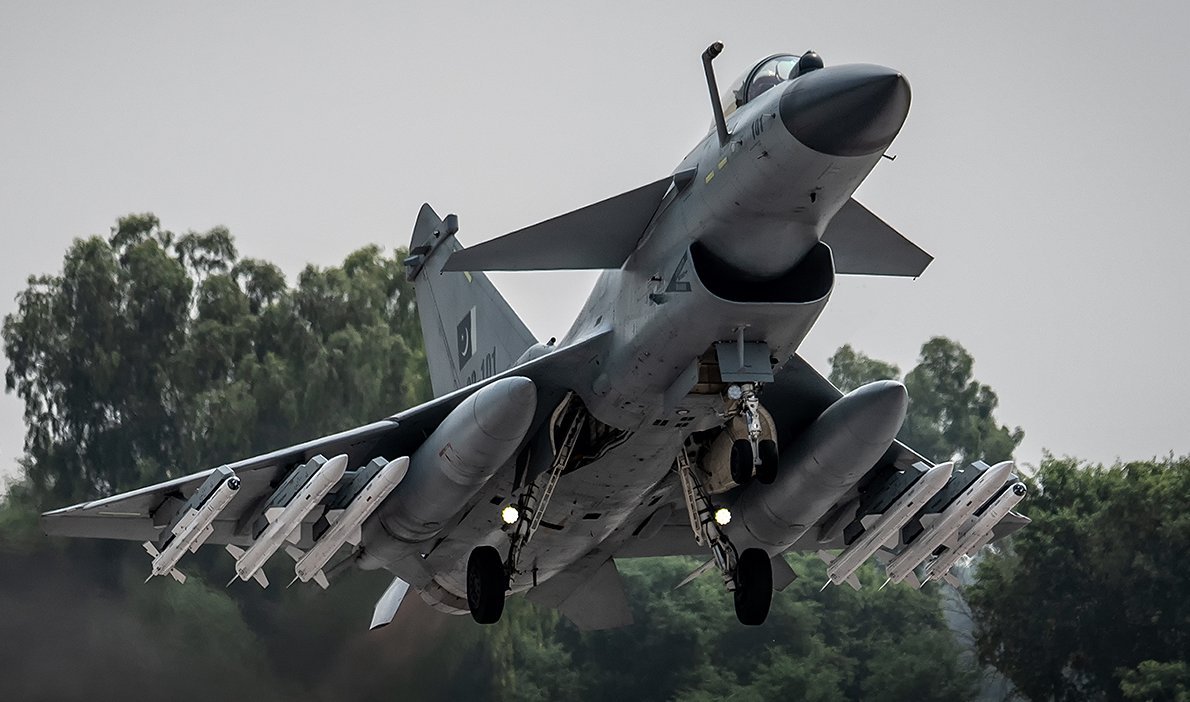“Rafale Killers on Two Fronts?”: Bangladesh Eyes Chinese J-10C After Pakistan’s Shock Air Combat Performance
Sources suggest that Bangladesh is now seriously considering procuring the J-10C, a 4.5++ generation multirole fighter developed by Chengdu Aircraft Industry Corporation (CAIG), in a decision that would make it the second operator in South Asia after Pakistan.
(DEFENCE SECURITY ASIA) – The Pakistan Air Force’s recent operational deployment of its J-10C “Vigorous Dragon” fighters during a high-intensity standoff with India has reverberated across South Asia, with Dhaka now reportedly fast-tracking its interest in the same Chinese-built platform—a move that could dramatically alter the region’s aerial power balance.
Sources suggest that Bangladesh is now seriously considering procuring the J-10C, a 4.5++ generation multirole fighter developed by Chengdu Aircraft Industry Corporation (CAIG), in a decision that would make it the second operator in South Asia after Pakistan.
For India, which is already contending with the J-10C on its western front, the prospect of facing the same aircraft from the east—operated by Bangladesh—would be a significant geo-strategic development.
Reports indicate that Dhaka has opened preliminary negotiations with Beijing for a potential deal to acquire the J-10C, a fighter that has gained prominence following Pakistan’s reported success in downing three Indian Rafale jets during the recent air conflict.
According to local media sources in Bangladesh, the Bangladesh Air Force (BAF) has expressed strong interest in acquiring 16 J-10C aircraft as part of a first-phase procurement effort aimed at phasing out its older combat platforms.
Bangladesh Air Force Chief, Air Marshal Hasan Mahmood Khan, confirmed the service’s ambition to strengthen its airpower capabilities.
“We are trying our best to acquire fighter jets and attack helicopters,” he stated, highlighting the urgency of expanding the air force’s operational reach.

Dhaka is said to be exploring the signing of a formal acquisition agreement with China that would deliver an initial 16 aircraft, with follow-on orders likely as Bangladesh undertakes a comprehensive upgrade of its aerial combat fleet.
The renewed interest follows what has been described by defence analysts as the “spectacular” combat showing of the J-10C in the Pakistan-India aerial exchange, particularly with the aircraft’s reported ability to shoot down Indian Rafales, widely regarded as one of the most advanced Western fighters deployed in the region.
While the Indian government has refused to acknowledge any losses, multiple unofficial reports claim that in addition to the three Rafales, Pakistan also shot down a MiG-29 and a Su-30MKI, bringing the total to five IAF jets.
Should the BAF acquire the J-10C, India could find itself outflanked on both its eastern and western fronts by a high-performance, Chinese-built fighter operated by two neighbouring states with evolving strategic postures.
Tensions between New Delhi and Dhaka have deteriorated in recent months, particularly after former Bangladeshi Prime Minister Sheikh Hasina sought asylum in India, creating further friction in bilateral ties.
A J-10C acquisition by Bangladesh in this context would not only heighten India’s military anxieties, but also signal Dhaka’s intent to diversify its defence partnerships and assert greater regional independence.

In August, Chinese defence sources revealed that Beijing had officially offered the J-10C to Bangladesh as a replacement for its ageing fleet of F-7 interceptors, which were also originally supplied by China.
Pakistan, which announced in 2022 that it had inducted 25 J-10C fighters into frontline service, has positioned the aircraft as a counterbalance to India’s Rafale fleet, purchased from France under a high-profile defence agreement.
Beyond Pakistan, Egypt has also signalled its intention to procure the J-10C as a replacement for its aging U.S.-supplied F-16s, reflecting a broader pattern of Middle Eastern air forces diversifying away from traditional Western platforms.
First unveiled publicly in 2017 and inducted into active service with the People’s Liberation Army Air Force (PLAAF) in 2018, the J-10C represents a major evolution of China’s fourth-generation fighter design, optimised for both air superiority and precision ground strike missions.
The aircraft has also drawn international attention at air shows, with Azerbaijan’s air force commander personally inspecting the platform at Airshow China in Zhuhai, a signal of potential broader export appeal.
Analysts estimate that the PLAAF currently operates approximately 150 J-10C units, making it a core asset of China’s modernised air combat doctrine.


Unlike its predecessors, the J-10C features reduced radar cross-section, improved aerodynamics, and is powered by the domestically developed WS-10C turbofan engine, enhancing its thrust-to-weight ratio and removing dependence on Russian propulsion systems.
The J-10C is also equipped with a cutting-edge Active Electronically Scanned Array (AESA) radar, dramatically improving its detection, tracking, and engagement envelope—critical in modern beyond-visual-range (BVR) combat scenarios.
Western defence observers often compare the J-10C to the F-16 Block 70/72, though many point to the aircraft’s technical lineage from the cancelled Israeli Lavi project, which China reportedly absorbed into its indigenous development efforts.
Pakistan’s J-10C variant comes equipped with PL-15 BVR air-to-air missiles, one of the longest-range air-to-air missiles currently fielded outside NATO, with an estimated range between 200 km and 300 km, according to Chinese sources.
The PL-15, reportedly co-developed with input from Russian scientists, is often cited as a direct competitor to the American AIM-120D AMRAAM, and its integration on the J-10C gives the aircraft a significant engagement advantage in contested airspace.
The use of the WS-10C engine instead of the Russian Saturn AL-31F further simplifies the export process and allows for greater autonomy in sustaining long-term fleet operations for partner nations like Pakistan—and potentially Bangladesh.

If Dhaka proceeds with the acquisition, it will mark a significant shift in South Asia’s aerial power architecture, bolstering Bangladesh’s deterrence posture amid growing regional competition and ongoing maritime tensions in the Bay of Bengal.
By fielding a 4.5++ generation aircraft, Bangladesh would significantly enhance its ability to conduct airspace denial operations, project airpower across the region, and counter both conventional and hybrid threats emanating from neighbouring states and extra-regional powers.
The J-10C’s combat versatility also positions it as a key enabler of Anti-Access/Area Denial (A2/AD) strategies, which are increasingly vital for defending Bangladesh’s Exclusive Economic Zone (EEZ) and securing maritime interests in the geo-strategically vital Bay of Bengal.
Bangladesh has long been a key recipient of Chinese defence equipment, operating a broad inventory of Chinese-origin systems including the MBT-2000 main battle tank, C-802A anti-ship missiles, and the FM-90 air defence system.
The potential induction of the J-10C would not only deepen Dhaka’s technological and operational synergy with existing Chinese platforms but also facilitate faster integration into combined doctrine, logistics chains, and command structures.
Such high-level interoperability would reduce maintenance complexity, lower training costs, and enable Bangladesh to develop a streamlined, agile, and mission-ready air combat ecosystem—capable of responding decisively to regional flashpoints.
— DEFENCE SECURITY ASIA


